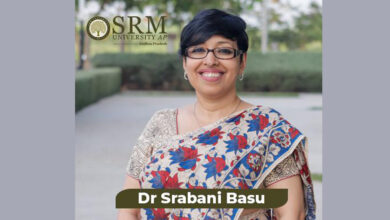Reimagining Classrooms: Learning in the Age of AI and Automation
Dr. P. Prasant, Founder of PCSM and Education Mentor

In an era where technology is evolving faster than textbooks can keep up, the traditional idea of a classroom is undergoing a profound transformation. Artificial Intelligence (AI), automation, and emerging technologies are not only reshaping industries but also redefining how, where, and what we learn. Education, once limited to chalkboards and lecture halls, is now moving towards adaptive platforms, intelligent content delivery, and personalized learning experiences.
The 21st-century learner is growing up in a world driven by intelligent machines, data-driven decisions, and rapid technological shifts. To prepare students for such a future, education systems must go beyond memorization and theoretical understanding. Instead, they must focus on building critical thinking, creativity, collaboration, emotional intelligence, and digital fluency. This shift is not a luxury it’s a necessity.
AI is already beginning to make its presence felt in the classroom. Intelligent tutoring systems, for instance, can analyze a student’s pace and understanding, offering real-time feedback and tailored support. These systems identify learning gaps and adapt content accordingly, allowing every student to progress at their own rhythm. Unlike the one-size-fits-all model of traditional education, AI enables truly personalized learning something educators have long aspired to deliver.
Automation is also transforming the way administrative and repetitive tasks are handled. From grading assignments to managing attendance and generating progress reports, automation frees up teachers to focus on what matters most facilitating learning and mentorship. Teachers, instead of being mere transmitters of information, are becoming learning coaches and emotional guides.
Moreover, access to global knowledge is no longer confined to libraries. AI-powered platforms can bring the world into a classroom offering simulations, virtual labs, immersive language training, and even real-time translations. Through these tools, students in remote villages can access the same quality of education as their urban counterparts, leveling the playing field in a way that was previously unimaginable.
However, this technological shift also brings challenges. The risk of over-reliance on machines, concerns around data privacy, unequal access to digital infrastructure, and the emotional disconnect of screen-based learning are real issues that must be addressed. Technology is a powerful enabler, but it cannot replace the human connection that lies at the heart of education.
To truly reimagine classrooms for the age of AI and automation, stakeholders from educators and policymakers to EdTech innovators must work together to create hybrid models that combine the efficiency of technology with the empathy of teachers. The classrooms of tomorrow will not be defined by walls, blackboards, or school bells, but by fluid learning environments where students are empowered, curious, and future-ready.
As we look ahead, the question is no longer whether AI belongs in the classroom but how we can design education systems that harness its potential while preserving the values of human connection, critical thought, and lifelong learning.




